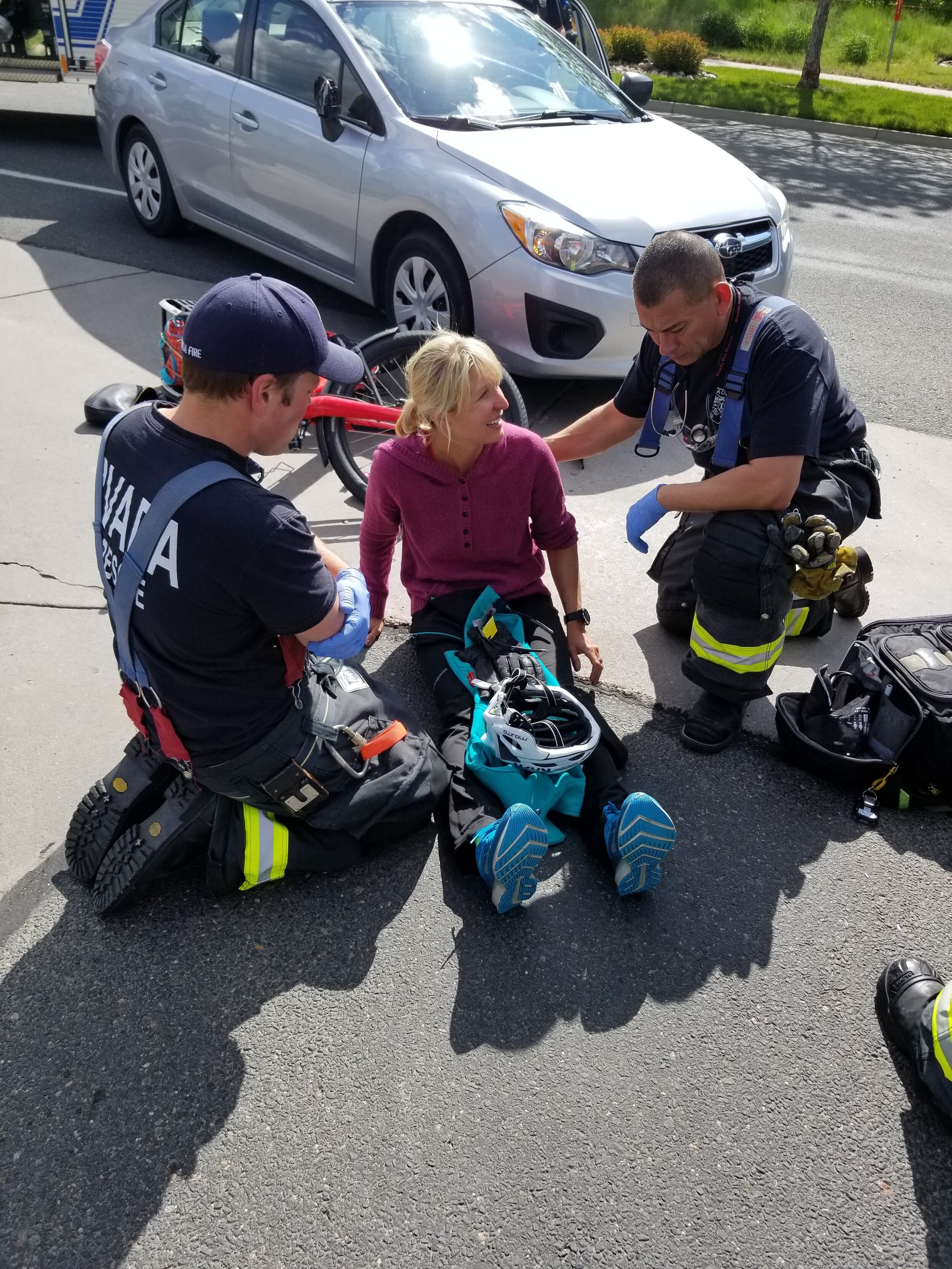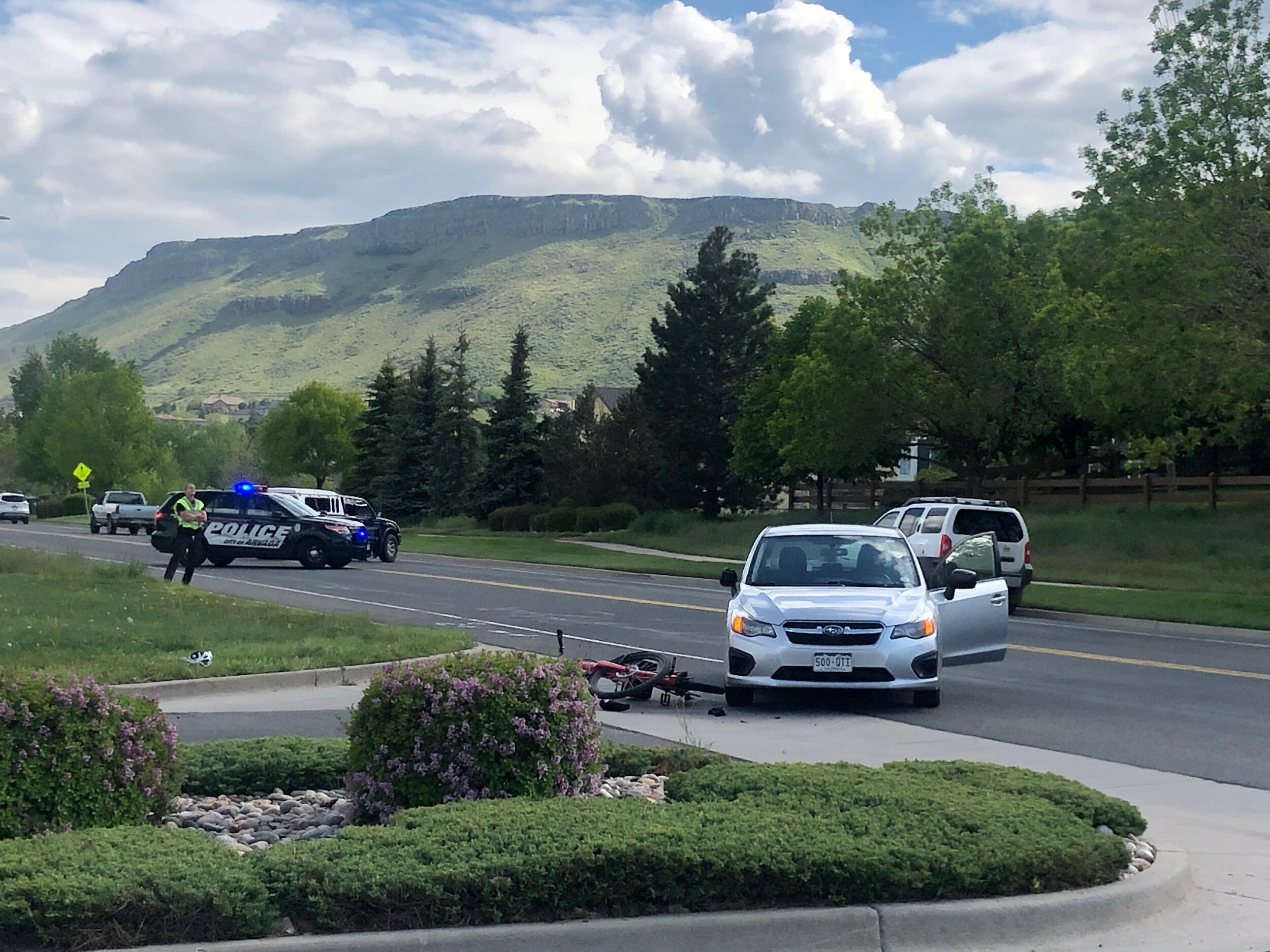Luckily, a passerby witnessed the event and caught the license plate number of the fleeing motorist. Police were called and located the driver in her home about an hour after the collision. She was drinking Schnapps... The officers conducted a Blood Alcohol Test (BAC).
We later learned that the motorist worked for police and fire dispatch. It is believed she thought that if she began drinking at home, perhaps the BAC could not conclusively prove she had been drinking at the time of the crash. However, when results came back showing her BAC was .317, her theory fell apart. This level of intoxication meant that she either drank to near-deathly levels in that one hour, or more realistically, she had been drinking before the crash, was intoxicated at the time she hit Brandon, and then continued drinking once home.
Hit a human. Leave. Run home and start slamming shots? Say what?
The driver was cited with numerous violations. During the pendency of her criminal case, we learned that her versions of what happened varied drastically; from, “I thought I hit a pothole,” to “A cyclist darted in front of my car,” to “The Arby’s fell off my passenger seat onto the floor and I reached down to pick it up.” Suffice it to say, these explanations all fell short of accepting responsibility.
Meanwhile, Brandon had hired our office to represent him, and we had begun the process of pursuing the motorist’s insurance – State Farm (SF)–for his injuries and claims. As in our last blog post, SF’s initial settlement offer was grossly inadequate in light of his injuries, as well as in light of their insured’s/the motorist’s conduct. At our urging they increased their offers, minimally, $5000 at a time, though ultimately still way outside the realm of possible settlement value. This, despite their insured’s guilty plea in the traffic/criminal case... SF seemed to think that they did not owe my client adequate compensation. So, we filed suit.
In Colorado, when someone commits negligence, but also does so with exacerbating factors, (or what we like to call, willful and wanton conduct), a Plaintiff is permitted to seek leave from the Court to add an additional claim for punitive damages (C.R.S. 13-1-102). Punitive damages are not based on any damages or claims that the Plaintiff incurred – they are solely intended to punish someone for their misconduct. A jury may award any amount it chooses for punitive damages – it is solely intended to punish someone with a large monetary verdict. In Colorado, insurers don’t eventually pay a punitive jury award – the actual wrongdoer does. Here, our plan was to amend our Complaint to add a claim for punitives, to allow the jury to punish the driver for her conduct with – we hoped – a large monetary sanction.
However, before we got to this juncture, we noted the content of the Answer filed by State Farm’s defense counsel. In it, State Farm, on behalf of its insured/at-fault driver, asserted some curious affirmative defenses, including one that claimed Brandon contributed to the collision:
"The proximate cause of Plaintiff's claimed damages and/or injuries, if any, may have been Plaintiff's comparative negligence, which conduct either bars or reduces Plaintiff's recovery, if any, in accordance with Colorado's Comparative Negligence Statute. C.R.S. 13-21-111 (2015)."
SF also claimed that it must’ve been someone else that caused Brandon's injuries and damages:
“The proximate cause of Plaintiff’s claimed damages and/or injuries, if any, may have been the act or omissions of a third party or parties whom Defendant has no control, to whom Defendant has no relationship, and for whom Defendant is not legally responsible.”
Interesting.
Now in the practice of defending law suits, it is fairly common for the Defendant’s Answer to contain some boilerplate language, as well as boilerplate affirmative defenses. However, under the Colorado Rules of Civil Procedure, "The signature of an attorney constitutes a certificate by him that he has read the pleading; that to the best of his knowledge, information, and belief formed after reasonable inquiry, it is well grounded in fact and is warranted by existing law or a good faith argument for the extension, modification, or reversal of existing law, and that it is not interposed for any improper purpose, such as to harass or to cause unnecessary delay or needless increase in the cost of litigation." (C.R.C.P. Rule 11(a)).
Keep in mind that by the time the Answer was filed, the motorist had pled guilty in the criminal case to charges resulting from her careless driving causing injury, her fleeing the scene, and her driving while intoxicated. While the burdens of proof are different in the criminal and the civil cases, and her plea of guilty in the criminal case would not per se be admissible in Brandon's civil case, her attorneys knew that she had confessed to her actions. They knew, because we’d provided them the transcript of her sentencing hearing... Where I was present, as was Brandon and his wife and their young son.
Imagine our surprise then, to see SF take this approach in litigation. We could not wait to see what they claimed Brandon did, to contribute to him being hit from behind by their drunk driver! We found this conduct very curious – that the defendant and her counsel would deny her responsibility and negligence, in this pleading filed with the Court. We wanted very much for the jury in this case to hear about her denials and to compare that to the testimony of the bystander who witnessed the collision, and the testimony of the law enforcement officers who visited her home shortly after. We wanted the jury to compare her denials of fault with her legally-documented intoxication. What a trial this would be!
SF counsel by filing such an Answer, had placed its insured in a very precarious position: punitive damages would not be paid by SF, nor could their insured discharge them in bankruptcy. If we went to trial and got a large punitive award, this Judgment would follow (and likely financially cripple) the driver for life. And Jeffco juries are known to punish people who do things like this with large punitive verdicts. Imagine the jurors' response to hearing that the Answer and legal position adopted by the driver and her counsel, was that Brandon had done something to contribute to this collision! SF had exposed its insured to this very real possibility, with the Answer it filed. It made statements in the Answer that arguably violated Colorado Rules regarding pleadings and implicated sanctions.
We pointed out this interesting scenario to the lawyers at SF. The case settled shortly thereafter, for the amount we demanded pre-suit.
Boilerplate language in a Defendant’s Answer given these facts, was a game changer. Moral of the story: while multi-billion dollar insurance companies may have large, well-staffed law firms and attorneys at their disposal, failure to pay attention to the actual issues can be devastating. This is why our firm controls (carefully!) our caseload, and this is why we read Answers and affirmative defenses carefully, and show up at sentencing hearings. Bottom line: we won’t allow our injured clients to be bullied. To have a driver drink, hit a cyclist from behind and flee the scene, and then to have the audacity to respond in an Answer that he was in ANY WAY at fault or a contributing factor, is offensive. Sometimes a case resembles a really hard bike ride: It's a slog to the top of the climb, but hanging in there, and continuing to work hard, does pay off. Once again we had a tenacious client, who was not desperate to settle, and who was game to take this case all the way to trial. It takes courage and fortitude- as I've discussed in previous blog posts.
Now, what about that driver? What happened to her? The day of her sentencing hearing in Judge Enquist’s courtroom (Jeffco) was the Monday following a Friday hearing, in which a young man who’d been drinking, drove up Lookout Mountain on the wrong side of the road and caused cyclist Tom Flanigan’s death. There, Judge Enquist had sentenced the driver to the max allowed under the terms of his plea: 10 years in the Department of Corrections (DOC). Now, 3 days later, Judge Enquist was again hearing facts of a drunk driver hitting a cyclist. She was beyond furious. Under the terms of the plea reached with the District Attorney’s office, the Judge sentenced this driver to six years - the max she could order under the plea. Counsel for the Defendant asked for a stay of execution (a few days’ time) so that the driver could get her affairs in order. The Judge said no – she was remanded immediately and began serving her sentence that day. Of the 6 year sentence, she will likely only serve 12-15 months total.
Did we want to see this mother and wife sit in a jail cell? Did it make Brandon and his wife happy, or feel any better? Did it feel like justice? Of course not. We all wish this had never happened and that this woman had not chosen to drink, drive, hit a cyclist and then intentionally flee the scene. It impacted everyone's life in a negative way. Situations like this are exactly the reason why Colorado bike advocates worked with the legislature to make the hit-and-run statute penalties stiffer: because if someone "accidentally hits a cyclist," that’s bad enough, but if they intentionally leave the scene and EMS is not immediately summoned to care for the cyclist, they may (and often do) die from their injuries. Leaving the scene of a bike crash is an act that deserves to be punished harshly.
If you’d like to read the sentencing hearing transcript:















